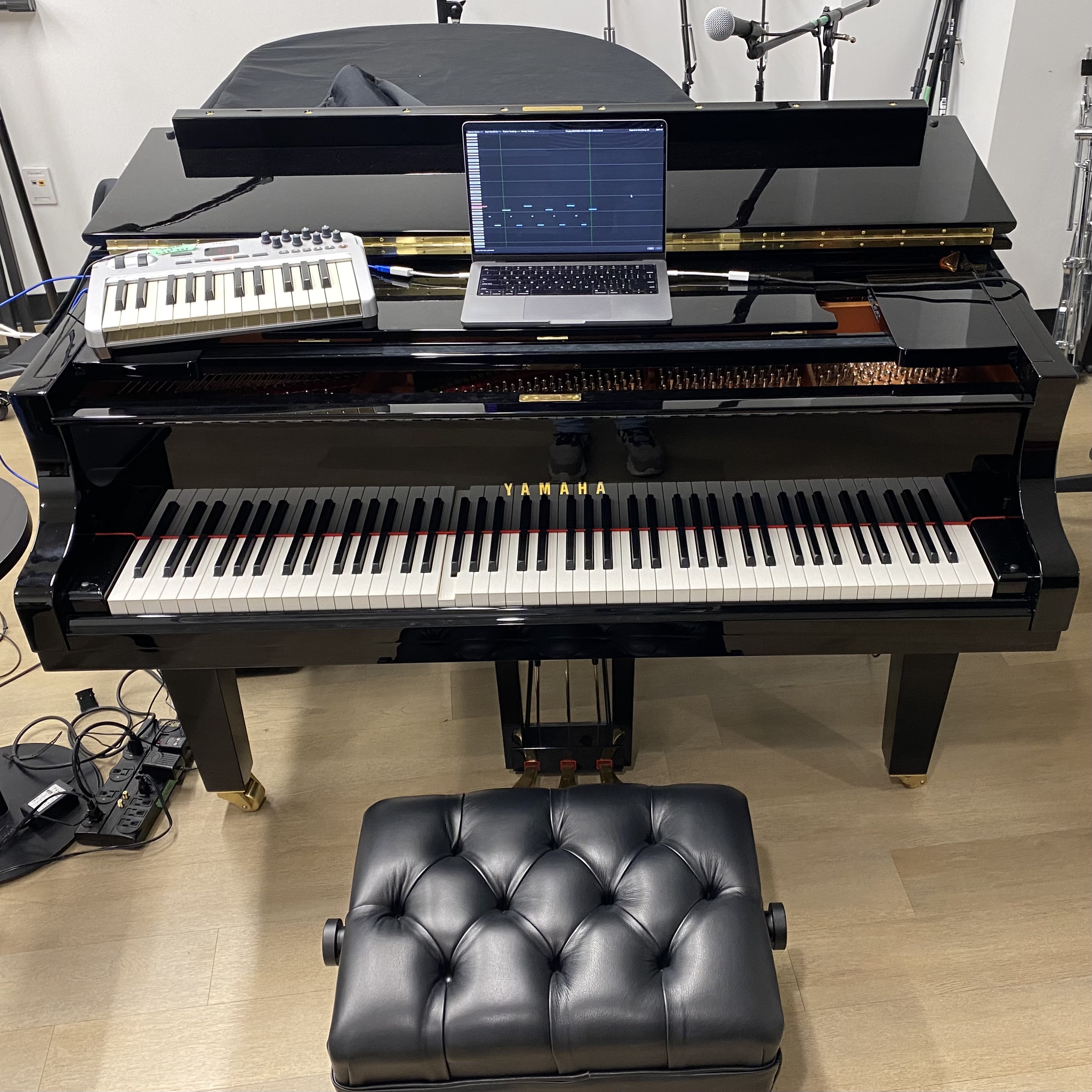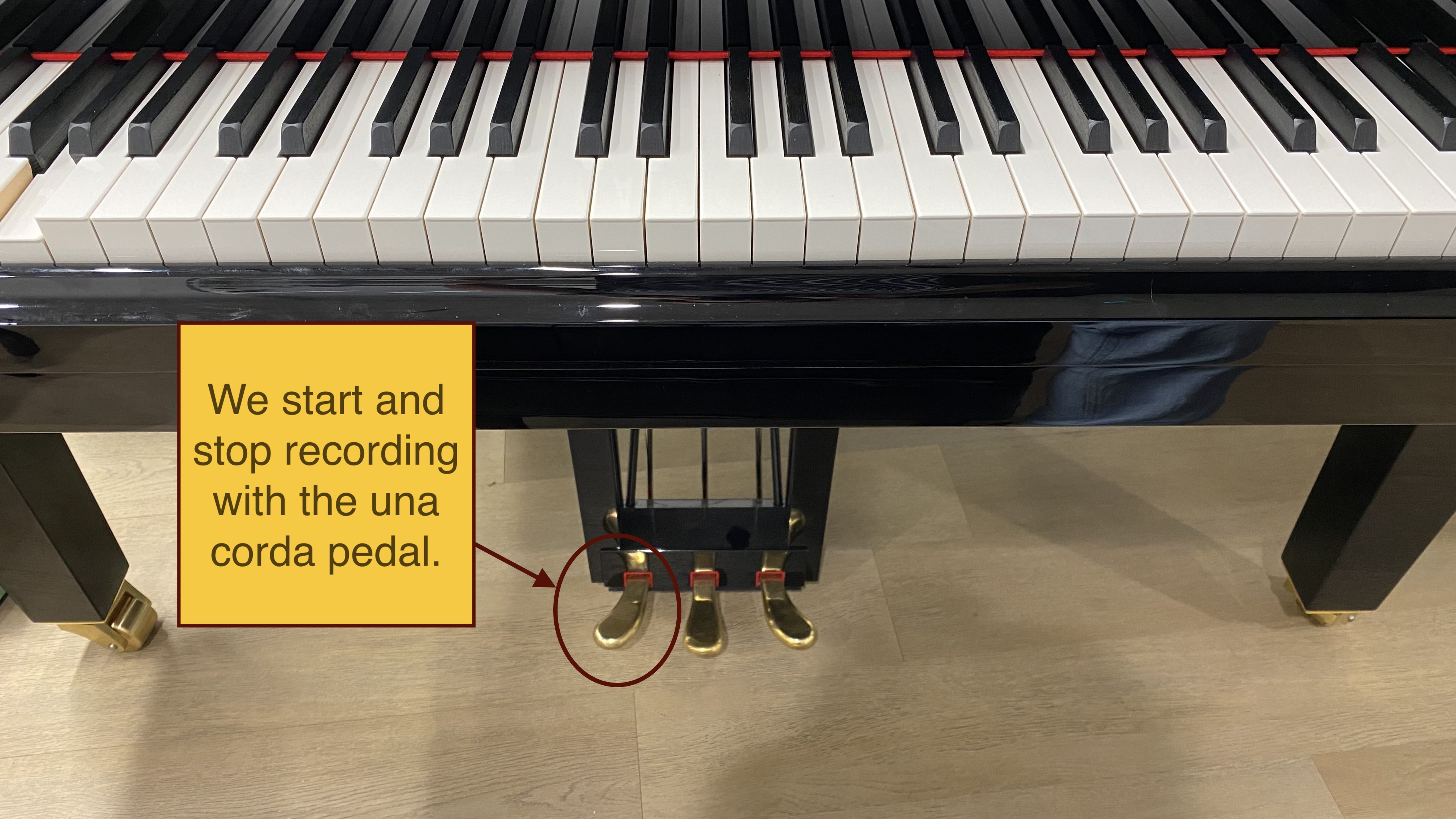A Musician-Designed Dynamic Looping Framework
When I read about a new AI-music system, the first thing I want to know is how it sounds, how does it feel. Here’s how our SmartLooper system currently sounds and looks when I’m playing with it:
While SmartLooper was created and implemented by ML researchers 1, I started the design by asking myself, as a musician:
“Forget about AI: what tool would you love to have?”
The answer was simple and immediate: I wanted to create a groove at my piano, and then play along with it. That’s it. But I didn’t want just another looping pedal. I wanted the groove played as if I were holding it down myself — keeping the feel, and also letting it gradually evolve and unfold.
So that’s what we made. And it’s turning out to be one of the funnest AI-music tools I’ve had the opportunity to use. (And it’s still in development— so it’s evolving in exciting ways.) I believe part of what makes it engaging is that the AI is secondary: it is just a means to a creative end. And while that end, i.e. an intelligent dynamic looping framework, is one of those concepts that might seem obvious in hindsight, it fills a gap, it sounds great, and the tech is ripe for it. We’re excited by all of it.
This post introduces SmartLooper from a musician’s point of view. We’ll share more demos and technical details in future posts. But first, here’s how it all started.
Step 1: Collect Some Personal Data
Over a period of many months, I collected my own playing data. Just a little at a time — 20 minutes here, 30 minutes there — and over time it added up.
On what did I collect it? A Yamaha Disklavier—a real (& good) piano with MIDI in/out. Think: Yamaha grand meets USB port. ( For more awesome examples of projects with digital extensions of acoustic pianos, check out Surface Tension by Eve Egoyan & David Rokeby, Pablo Samuel Castro’s video channel, Piano Genie by Chris Donahue, Ian Simon, and Sander Dieleman, and Dan Tepfer’s Natural Machines and other projects– so many cool and beautiful things…)
I usually plug the piano into Ableton Live, but other DAWs work fine too. I mainly collect MIDI, but there’s always an audio input recording as well.

If you want to try this at home, get in touch2. You don’t need a Disklavier — any MIDI-capable keyboard will work.
As for how I collected the data: that’s for a future post. But in short, I gave myself a few simple practice constraints that made the recordings musically rich and helpful for building this system. While the guidelines were simple, I could still play complex stuff when I wanted. So basically I’d sit down, hit record, and have a great time playing and practising within a structure.
That data became the crucial foundation of something surprising: a system that sort of reflected my own playing back to me and could help keep the groove while I’d play over it.
Step 2: Iterating Towards Playability
With initial data in place, we began building, testing, and tweaking the system. We bounced between steps such as:
- Absorbing data: cleaning it, throwing some of it, and collecting more
- Parsing the spoken audio using Whisper (remember, everything was being recorded) to pull out spontaneous practice notes, annotations and instructions I said aloud
- Debugging: At first the system was nearly unplayable. It seemed there was always something… but then…
- Spotting glimmers of something cool… and then chasing them! (whooohoo)
We’d iterate on the system’s internals, fix one thing, break another, try again. Slowly, the experience evolved from frequent “this is frustrating” to often: “this is awesome to play with.”
SmartLooper is satisfying and engaging to play: I’m often excited to come back to it and try out new musical things, and it feels musically rewarding.
Step 3: Playing a Duet (with Sort of Myself)
So what actually happens? What does this SmartLooper do?
I start by playing a groove — usually just a few bars. I use a foot pedal to mark the rough start and stop points. You can think of what I play as a musical prompt.

SmartLooper then takes that prompt and looks for a good excerpt within it — maybe the whole thing, maybe just 8 beats, maybe half of it. The system is more effective and enjoyable to improvise with when it lets me be loose and exploratory at the start.
From there, it loops that excerpt as a groove — but not rigidly. It slowly and subtly shifts things around. The feel stays intact, but the loop evolves.
We also added “direct controls” that are completely predictable. For example, I can use a small auxiliary keyboard to force modulation to a new key, as can be seen and heard in the last few seconds of the video above. I can also dial up (or down) the system’s sensitivity to my own dynamics, which is fun to play with too.
Here’s what it feels like to play with it:
- Keeps things consistent enough that I know what to expect.
- Surprises are usually delightful. As we iterated, it went from usually annoying, to sometimes fun, to often fun.
- A balance between predictability and surprise that feels like it’s in a sweet spot these days.
- Direct controls are satisfying to incorporate when I want to, and unobtrusive otherwise.
- It extends what I can do — I can explore playing over my own grooves.
- Signals big shifts clearly via a visual interface. I can see and hear them coming a bar or two in advance and adjust my playing accordingly.
People have been asking me, “How does this compare with playing with another person?” And the truth is: it’s not meant to replace that. It has infinite patience, but limited adaptability. You can’t hand it a lead sheet, and it won’t notice if mid-jam I segue into playing a tune we both know.
Ok, so, compared to practicing alone? Well, it’s not meant to replace that either. By any stretch. But it does do one amazing thing: it fills a specific gap I sometimes felt when practising solo: wanting a responsive, dynamic groove companion that reflects and expands on my own vocabulary — and every now and then surprises me.
What’s Next
Here are some more videos; the next three are all from one “session”:
First, just me playing a montuno-like suggestion (10 sec):
Now here are two excerpts from the session that started with that prompt:
Finally, one more short video from another session that demonstrates a different groove feel from the above videos.
We’ll be posting more soon: videos, tech breakdowns, and reflections on building musician-driven AI systems.
If you’re a musician or researcher who’s curious to try it out or collaborate—get in touch! We’d love to hear from you.
More to come!
-
The current version of the system was created by Finlay Miller, Chandramouli Shama Sastry, Sri Harsha Dumpala, Scott Lowe, Dani Oore, and myself. I wrote this post with their feedback, so even though it’s a first person account, the post can be cited as: Sageev Oore, Finlay Miller, Chandramouli Shama Sastry, Sri Harsha Dumpala, Dani Oore, Scott Lowe, “Introducing SmartLooper: A Musician-Designed Dynamic Looping Framework”, Blog Post, https://osageev.github.io/introducing-smartlooper/, 2025-06-15 ↩

